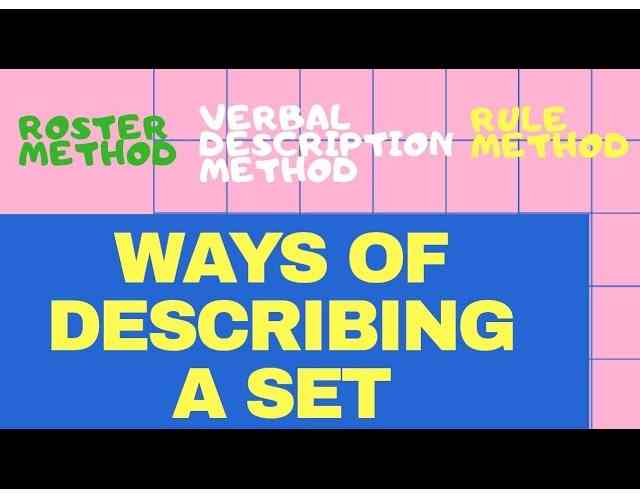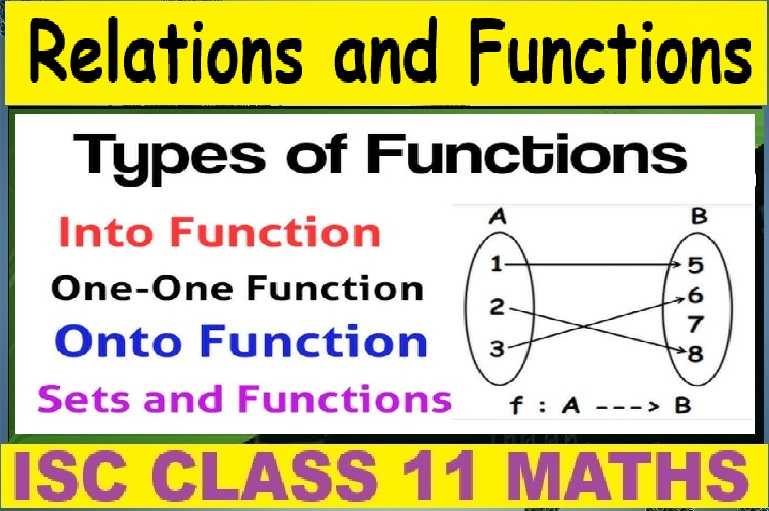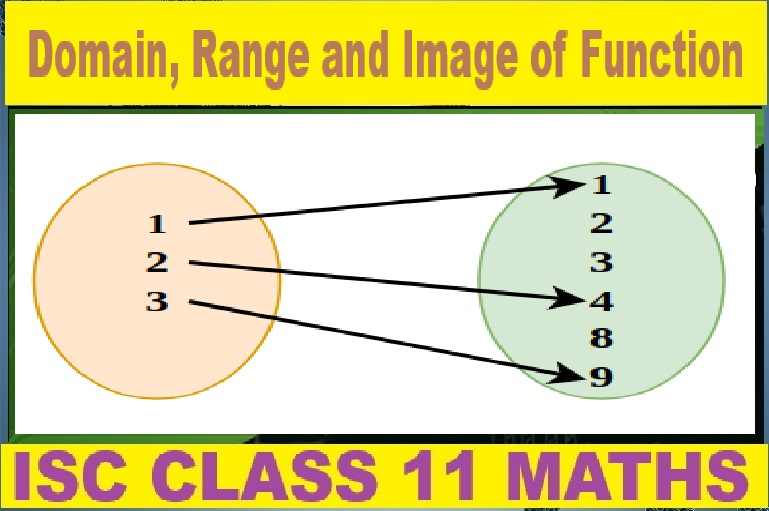Sets Class- 7th RS Aggarwal Exe-6 A Goyal Brothers ICSE Math Solution . We provide step by step Solutions of lesson-6 Sets for ICSE Class-7 Foundation RS Aggarwal Mathematics of Goyal Brothers Prakashan . Our Solutions contain all type Questions of Exe-6 A to develop skill and confidence. Visit official Website CISCE for detail information about ICSE Board Class-7 Mathematics in this article we would learn What is set, How to describe a set and type of sets with example.

Sets Class- 7th RS Aggarwal Exe-6 A Goyal Brothers ICSE Maths Solution
| Board | ICSE |
| Publications | Goyal brothers Prakashan |
| Subject | Maths |
| Class | 7th |
| Chapter-6 | Sets |
| Writer | RS Aggrawal |
| Book Name | Foundation |
| Topics | Solution of Exe-6 A |
| Academic Session | 2023 – 2024 |
What is Sets?
What are the 3 ways of describing a set? How do you describe the elements of a set?How do you verbally describe a set? describing sets examples
How to Describe a Set?
I. Roster Method or Tabular Form
II. Description Method
III. Rule Method or Set-Builder Form
Types of Sets
1. Finite set
2. Infinite set
3. Empty set or Null set
4. Singleton set
5. Equal sets
6. Cardinal number of a set
7. Equivalent sets
8. Disjoint sets
9. Overlapping sets
Exercise – 6 A
Sets Class- 7th RS Aggarwal Goyal Brothers ICSE Maths Solution
1. Which of the following collections are sets ?
(i) All books in your school library.
Answer: Yes
(ii) All red flowers in a park.
Answer: Yes
(iii) All good players in your school.
Answer: No
(iv) All fiction movies.
Answer: Yes
(v) All easy problems in your book on mathematics.
Answer: No
(vi) All poor people in Mumbai.
Answer: No
(vii) All boys in your class weighing less than 50 kg.
Answer: Yes
(viii) All persons of repute in your colony.
Answer: No
(ix) All even numbers greater than 100.
Answer: Yes
(x) All integers less than -5.
Answer: Yes
2. Write each of the following sets in Roster form :
(i) A = set of all prime numbers between 70 and 100.
Answer: A = {71, 73, 79, 83, 89, 97}
(ii) B = set of all whole numbers less than 8.
Answer: B = {0, 1, 2, 3, 5, 6,7}
(iii) C = set of all integers lying between -7 and 2.
Answer: C = {-6, -5, -4, -3, -2, -1, 0, 1}
(iv) D = set of all composite numbers between 23 and 33.
Answer: D = {24, 25, 26, 27, 28, 30, 32}
(v) E = set of all letters in the word, ‘MATHEMATICS’.
Answer: E = {M, A, T, H, E, I, C, S}
(vi) F = set of all consonants in the word, ‘SECONDARY’.
Answer: F = {S, C, N, D, R, Y}
(vii) G = set of vowels in the word, ‘INTERMEDIATE’.
Answer: G = {I, E, A}
3. Write each of the following sets in Roster form and write the cardinal number of each :
(i) A = {x : x is an integer, -3 < x ≤ 4}.
Answer: A = {-2, -1, 0, 1, 2, 3, 4}, n(A) = 7
(ii) B = {x : x ∈ N, 3x – 6 < 9}.
Answer: B = {1, 2, 3, 4}, n(B) = 4
(iii) C = {x : x = n2 , n ∈ N, 10 < n < 16}.
Answer: C = {121, 144, 169, 196, 225}, n(C) = 5
(iv) D = {x : x ∈ W, x – 3 < 2}.
Answer: D = {0, 1, 2, 3, 4}, n(D) = 5
(v) E = {x : x = 2n – 1, n ∈ N and n < 6}.
Answer: E = {1, 3, 5, 7, 9}, n(E) = 5
(vi) F = {x : x is a letter in the word ‘COMMON’}.
Answer: F = {C, O, M, N}, n(F) = 4
(vii) G = {x : x is a primary colour}.
Answer: G = {Red, Blue, Yellow}, n(G) = 3
(viii) H = {x : x is a digit in the numeral 2362}.
Answer: H = {2, 3, 6}, n(H) = 3
(ix) J = {x : x = (1/n), n ∈ N, 4 < n < 10}.
Answer: J = {(1/5), (1/6), (1/7), (1/8), (1/9)}, n(J) = 5
4. Write each of the following sets in set-builder form :
(i) A = {4, 6, 8, 9, 10, 12, 14, 15, 16, 18}.
Answer: A = {x : x is a composite number, 1 < x < 20}
(ii) B = {1, 2, 3, 5, 6, 10, 15, 30}.
Answer: B = {x : x is a factor of 30}
(iii) C = {-9, -6, -3, 0, 3, 6, 9, 12, 15}.
Answer: C = {x : x = 3n, n ∈ I, -3 ≤ n ≤ 5}
(iv) D = {(1/2), (2/3), (3/4), …., (8/9)}.
Answer: D = {x : x = n/(n+1), n ∈ N, 1 ≤ n ≤ 8}
(v) E = {(1/3), (1/5), (1/7), (1/11), (1/13), (1/17), (1/19)}.
Answer: E = {x : x = (1/n), n is prime, 2 < n < 20}
(vi) F = {April, June, September, November}.
Answer: F = {x : x is a month of a year having 30 days}
(vii) G = {0}.
Answer: G = {x : x + 1 = 1, x ∈ W}
(viii) H = { }.
Answer: H = {x : x is a number, x ≠ x}
5. State whether the given set is finite or infinite :
(i) Set of all even natural numbers.
Answer: Infinite
(ii) Set of all odd integers.
Answer: Infinite
(iii) Set of all rivers in India.
Answer: Finite
(iv) Set of all points on a line segment 1 cm long.
Answer: Infinite
(v) Set of all factors of 1200.
Answer: Finite
(vi) Set of all multiples of 6.
Answer: Infinite
(vii) Set of all drops of water in a bucket.
Answer: Infinite
6. Identify the null sets among the following :
(i) A = {x : x is a whole number, x < 1}.
Answer: A = {0} Which is not a null set…..
(ii) B = {x : x is a number, x > x}.
Answer: B = { } Which is a null set…..
(iii) C = {x : x is an even prime number}.
Answer: C = {2} Which is not a null set…..
(iv) D = {x : x ∈ I, x2 = -4}.
Answer: D = { } Which is a null set…..
(v) E = {x : x is a perfect square number, 40 < x < 50}.
Answer: E = {49} Which is not a null set…..
(vi) F = {x : x ∈ N, 5 < x < 6}.
Answer: F = { } Which is a null set…..
7. Identify whether the given pair consists of equal or equivalent but not equal sets or none :
(i) A = set of letters of the word ‘FLOWER’.
B = set of letters of the word ‘FOLLOWER’.
Answer: A = (F, L, O, W, E, R)….
B = (F, O, L, W, E, R)….
(A=B) Which is equal set….
(ii) C = {x : x ∈ N, x + 5 = 6} and D = {x : x ∈ W, x < 1}.
Answer: C = (x : x + 5 = 6)
= (x : x = 6 – 5)
= (x : x = 1)
C = (1)….
D = (x : x ∈ W, x < 1)
= {0} (C↔D) Which is equivalent but not equal.
(iii) E = set of first five whole numbers.
F = set of first five natural numbers.
Answer: E = (0, 1, 2, 3, 4)
F = (1, 2, 3, 4, 5)
(E↔F)Which is equivalent but not equal.
(iv) G = {a, b, c} and H = {x, y, z}.
Answer: G = (a, b, c)….
H = (x, y, z)
(G↔H)Which is equivalent but not equal.
(v) J = {x : x ∈ N, x ≠ x} and K = {x : x ∈ N, 6 < x < 7}.
Answer: J = { }
K = { }
(J = K)Which is equal.
8. For each of the following pairs of sets, identify the disjoint and overlapping sets :
(i) A = {x : x is a prime number, x < 8}.
B = {x : x is an even natural number, x < 8}.
Answer: A = 2, 3, 5, 7
B = 2, 4, 6
Which are the overlapping sets…..
(ii) C = {x : x ∈ N, x < 10} and D = {x : x ∈ N, x is a multiple of 5}.
Answer: C = 1, 2, 3, 4, 5, 6, 7, 8, 9
D = 5, 10, 15, 20, 25
Which are the overlapping sets…..
(iii) E = {x : x = 4n, n ∈ N} and F = {x : x = 9n, n ∈ N}
[Hint : 36 ∈ E and 36 ∈ F.]
Answer: E = 4, 8, 12, 16, 20, 24, 28, 32, 36
F = 9, 18, 27, 36
Which are the overlapping sets…..
(iv) G = {x : x = 8n, n ∈ N and n < 7} and H = {x : x = 9n, n ∈ N and n < 7}.
Answer: G = 8, 16, 24, 32, 40, 48
H = 9, 18, 27, 36, 45, 54
∴ These set has no common element
∴ These are disjoint sets
9. State in each case, whether the given statement is true or false :
| Statement | True/False |
| (i) If A is the set of all non-negative integers, then 0 ∈ A. | T |
| (ii) If B is the set of all consonants, then c ∈ B. | T |
| (iii) If C is the set of all prime numbers less than 80, then 57 ∈ C. | F |
| (iv) {x : x ∈ W, x + 5 = 5} is a singleton set. | T |
| (v) If D = {x : x ∈ W, x < 4}, then n(D) = 4. | T |
| (vi) {a, b, c, 1, 2, 3} is not a set. | F |
| (vii) {1, 2, 3, 1, 2, 3, 1, 2, 3, ……} is an infinite set. | F |
| (viii) 0 ∈ ∮. | F |
| (ix) {3, 5} ∈ {1, 3, 5, 7, 9}. | F |
— : end of Sets Class- 7th RS Aggarwal Exe-6 A Goyal Brothers ICSE Maths Solution:–
Return to- ICSE Class -7 RS Aggarwal Goyal Brothers Math Solutions
Thanks
Please share with yours friends if you find it helpful.


